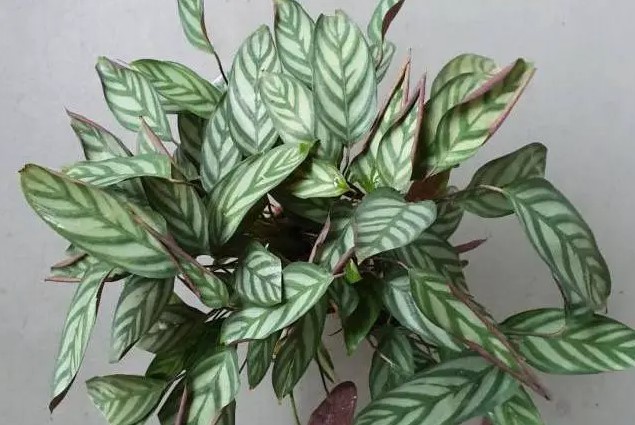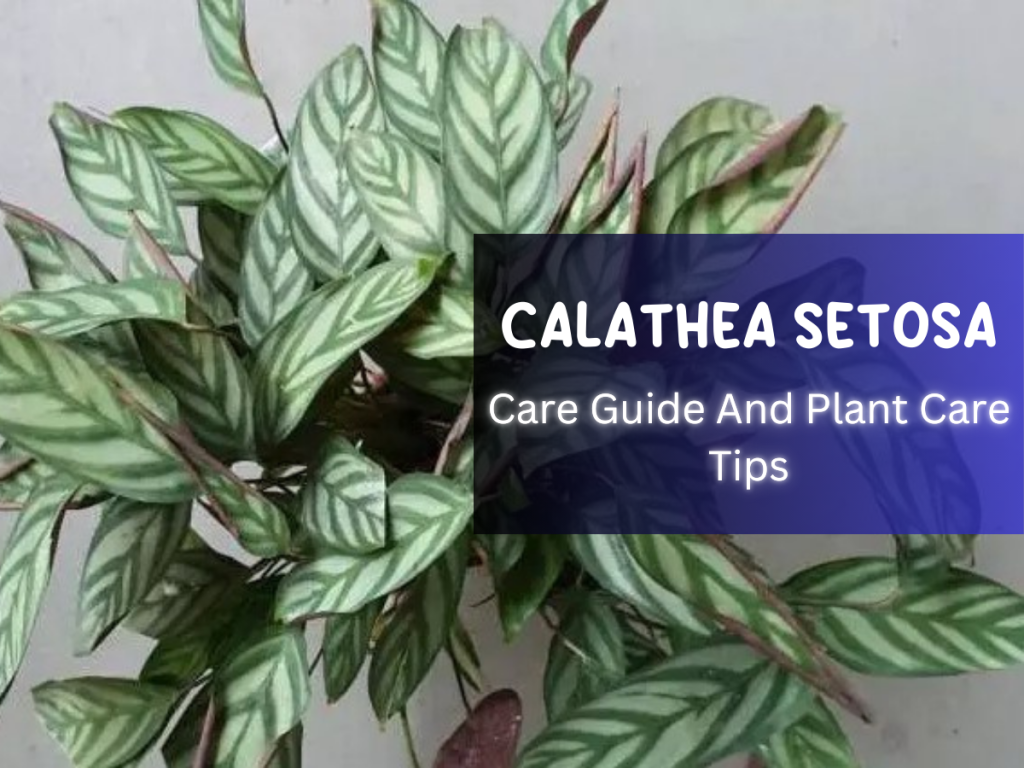Calathea Setosa, also known as the Velvet Calathea, is a stunning tropical plant native to Brazil. Its unique foliage, velvety leaves, and striking patterns make it a popular choice among plant enthusiasts. This comprehensive guide will delve into the various aspects of caring for Calathea Setosa, including lighting requirements, watering, soil preferences, temperature, humidity levels, propagation methods, and common pests and problems.
How Many Hours of Indirect Light is Ideal?
Calathea Setosa thrives in bright but indirect light. It should be placed near a window to receive filtered or diffused light. Direct sunlight can scorch its delicate leaves, so protecting it from harsh rays is best. Aim for approximately 6-8 hours of indirect light daily to ensure healthy growth.

Can I Use Tap Water?
While Calathea Setosa can somewhat tolerate tap water, it prefers purified or distilled water. Tap water often contains chemicals like chlorine and fluoride, which can cause leaf browning or leaf edges to turn crispy. To avoid these issues, it’s recommended to let tap water sit overnight before using it or opt for filtered water.
What Soil Prevents Root Rot?
To prevent root rot, using well-draining soil for Calathea Setosa is crucial. A mixture of peat moss, perlite, and orchid bark works well for this plant. These components provide adequate drainage and aeration, helping to maintain the ideal moisture level for the roots. Avoid using heavy soils or those that retain too much moisture, as they can lead to root rot.
What Temperature is Best?
Calathea Setosa prefers a warm and humid environment. Ideally, the temperature should range between 65-80°F (18-27°C). Avoid exposing the plant to sudden temperature fluctuations, which can cause stress and impact its overall health. Please keep it away from drafts or areas with cold air, such as near air conditioning vents or open windows during winter.
Is High Humidity Suitable for Calathea Setosa?
High humidity is essential for the Calathea Setosa to thrive. Aim for a humidity level of around 60-70%. You can increase humidity by using a humidifier, placing a tray with water near the plant, or grouping it with other houseplants. Misting the leaves regularly can also help create a humid microclimate around the plant.
Should I Use a Well-Balanced Fertilizer?
Yes, using a well-balanced, water-soluble fertilizer is beneficial for Calathea Setosa. During the growing season (spring and summer), apply a diluted fertilizer every 2-4 weeks to provide the necessary nutrients. It’s important not to over-fertilize, as it can lead to soil fertilizer burn or salt buildup. Follow the instructions on the fertilizer packaging for the correct dosage.
Can I Use Stem Cutting to Propagate?
Yes, Calathea Setosa can be propagated through stem cuttings. Select a healthy stem with a few leaves and cut it just below a leaf node. Place the cutting in a jar of water or a well-draining potting mix. Please keep it warm and humid, ensuring the soil or water stays moist. After a few weeks, roots will develop, indicating successful propagation.
Pests and Common Problems:
Calathea Setosa is generally resistant to pests but occasionally faces issues with spider mites, mealybugs, or aphids. Regularly inspect the leaves for any signs of pests and take prompt action if detected. Wiping the leaves with a damp cloth or using an organic insecticidal soap can help control these pests. Other common problems include leaf curling (indicating low humidity or underwatering) and leaf browning (caused by excessive light or improper watering).
Conclusion:
Caring for Calathea Setosa requires attention to detail and providing the right conditions. Following the guidelines outlined in this article, you can ensure that your Calathea Setosa flourishes with its stunning foliage and remains healthy and vibrant. Remember to provide indirect light, use purified water, well-draining soil, maintain suitable temperatures and humidity levels, fertilize appropriately, and promptly address any pests or common problems. Enjoy the beauty and tranquility that the Calathea Setosa brings to your indoor space! Read more article about Anthurium Regale in Avi Hoffman.

FAQ
Yes, Calathea setosa is often referred to as a prayer plant. The term “prayer plant” is commonly used to describe several species within the Calathea genus, including Calathea setosa. These plants are called prayer plants due to the unique behavior of their leaves, which fold up or “pray” in the evening and open up during the day.
Yes, Calathea is commonly known as a prayer plant. The name “prayer plant” is a general term used to describe many species within the Calathea genus. These plants have the characteristic leaf movement, where the leaves fold up at night and unfold during the day, resembling hands in prayer.
Calathea plants, including Calathea setosa, offer several benefits to humans. First and foremost, they are known for their air-purifying qualities. They can help improve indoor air quality by removing toxins and pollutants, thus creating a healthier environment. Additionally, Calathea plants are known for their calming effect and ability to promote relaxation. Their lush green foliage can enhance the aesthetic appeal of any space, providing a soothing and tranquil atmosphere.
Calathea plants have various nicknames that are commonly used to refer to them. Some popular nicknames for Calathea include:
Prayer Plant: This nickname is derived from the unique behavior of the leaves that fold up or “pray” in the evening and unfold during the day.
Peacock Plant: This nickname is often used for Calathea species with colorful and patterned foliage resembling the vibrant feathers of a peacock.
Zebra Plant: Some Calathea varieties have striped or zebra-like patterns on their leaves, leading to the nickname “Zebra Plant.”
Rattlesnake Plant: Certain Calathea species, such as Calathea lancifolia, have elongated, lance-shaped leaves with patterns resembling a rattlesnake’s skin, giving rise to the nickname “Rattlesnake Plant.”
Living Plant: Calathea plants are sometimes called “Living Plants” due to their interactive leaf movement and their ever-changing appearance throughout the day.
These nicknames are used interchangeably and reflect the unique characteristics and visual appeal of different Calathea species.







